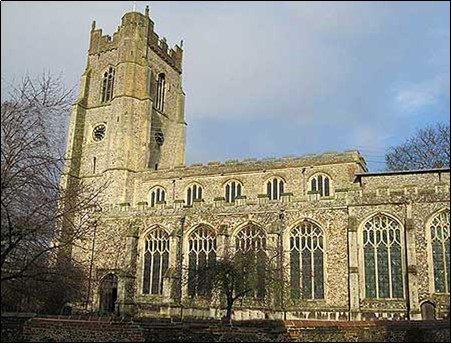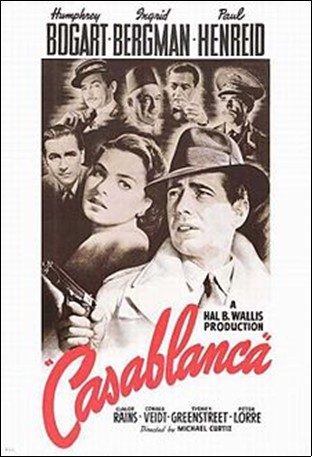By Maureen Storey
This article was published in the April 2015 edition of Soul Search, the Journal of The Sole Society
Overall there are very few Sole events in Suffolk. There are some Sowells in Lowestoft who no doubt fit somewhere on the Sewell Norfolk/Suffolk trees, a Sole family who appeared in Newmarket in the early 1700s whose roots will probably eventually be traced back across the county border into Cambridgeshire, and a Sole family who appeared in Sudbury, Suffolk, in the 1590s, but completely disappeared from our records after the mid-seventeenth century – until now that is.
That all the Sudbury records relate to the same family is something of an assumption. What we actually have are the marriages of three Sole men, William (in 1593), James (in 1595) and Robert (in 1600), in Sudbury and its environs, followed by the baptisms of 11 Sole children (3 for William and 4 each for James and Robert) at All Saints, Sudbury, between 1594 and 1611. It seems likely that William, James, and Robert were brothers (or at very least cousins), but there’s no proof of this. No earlier Sole records have been found in the area, so it seems likely the Soles moved into Sudbury in the late sixteenth century, but why?

Nowadays Sudbury is a small market town, but anyone who has visited it will see from the size of its churches that it was once very prosperous, its wealth in the Middle Ages stemming from the wool trade and the weaving and silk industries. By the end of the sixteenth century when the Soles arrived, however, the wool trade was in decline and the fortunes of its weaving industry were fluctuating. So what had attracted the Sole family to the area? It is doubtful that we will ever know for sure and it is possible that the family were involved in one of the textile industries, but Sudbury had one other possible draw – it was famous (or infamous depending on your point of view) for being a hotbed of Puritanism, with seventeenth century Sudbury being called a ‘wasps’ nest of dissent’.
Whatever their religious convictions, the Soles had disappeared from the town by the mid-1600s. There’s no trace of William and his family after the baptism of his youngest child Elizabeth in 1598.
James’s daughter Phillip (not Philippa) married John Sayles in 1625 and the couple’s two daughters, Phoebe and Sarah, were baptised in Little Waldingfield in 1626 and 1628, respectively, but we have no further records for James and his family in the Sudbury area. Robert’s family stayed in Sudbury the longest. The last definite record we have for Robert’s family is the marriage of his grandson Robert at the church of St Peter, Sudbury, in 1657.
So did the Sudbury Soles move away or simply die out? For the most part this is still an open question but we now know what happened to one branch of the family, and the path followed by that branch supports the idea that the family were dissenters: John Sayles, his wife Phillip and daughter Phoebe (Sarah presumably died in infancy) appear on the passenger list of the Winthrop Fleet of 1630.
In the 10 years after the Mayflower’s arrival in 1620 there was very little English emigration to America. Although the Mayflower settlers had established a colony in New England there were not enough of them to ensure its long-term survival. At the same time the conditions for dissenters in England were deteriorating and there was a general movement among them to follow the Pilgrim Fathers to America. In early 1629 the Massachusetts Bay Company was set up and obtained a royal charter which enabled the Company to develop permanent settlements in New England and later that year the Company sent its first contingent of emigrants. These were mostly young single men who were servants of either the Company or particular merchants associated with the Company, although the emigrants also included three ministers with Puritan leanings.
The Governor of the Company, John Winthrop, then set about planning the emigration of a larger group. In March 1630 the Winthrop Fleet, consisting of 11 ships, gathered off the Isle of Wight. Seven of these vessels carried 700 emigrants who were heading for the Massachusetts Bay Colony among whom were John, Phillip and Phoebe Sayles.
Led by Governor Winthrop in the flagship Arbella, the fleet set sail on 29 March and the first of the ships arrived in Salem, Massachusetts on 12 June. As with the Pilgrim Fathers, their first few months in America proved testing and of the 700 who set sail, 200 hundred died either on the voyage or within the first few months and about 100 returned to England. Some of the remaining 400 stayed in and around Salem, but many moved on to Boston, Watertown, and other settlements. The Winthrop Fleet is regarded as the first wave of the Great Migration to Massachusetts. By 1640 about 20,000 people had arrived in Massachusetts to start a new life, most of whom were from England and held Puritan beliefs. The Great Migration, which had originally been encouraged by the King, ended in about 1640 when the King not only withdrew his support but decreed that any one going to Massachusetts had to obtain a licence.
On arrival John Sayles and his family received a grant of land and set up home in Charlestown, which is the oldest district in the Boston conurbation. While in Massachusetts Phillip gave birth to a son, called John, and possibly also a second son, named Richard, but then there is no further mention of her in the records so it is presumed she died in the mid 1630s. By 1632 John Sayles was in trouble: he was found to have stolen food from his neighbours ‘during a time of great want’ and as a result he forfeited his land and was bound as an indentured servant to John Coggleshall. At about the same time his daughter Phoebe was also bound to John Coggeshall although this binding was more in the nature of an apprenticeship than a punishment. It seems neither John nor Phoebe settled to the life of an indentured servant. He was punished several times for absconding and she was released from her indenture in 1637 when Coggeshall reported that ‘said girl hath proved overburthensome’. By 1638 Coggeshall had himself fallen foul of the authorities in Massachusetts and he eventually moved south to Newport, Rhode Island.
There is no further mention of John and Phoebe Sayles in the Massachusetts records but in 1638 they appear in the Dutch settlement of New Amsterdam, where John set up as a planter on Manhattan Island. On 21 Aug 1644 he married Maria Roberts. He died in 1645 shortly after a making a nuncupative (verbal) will.
It appears that John and Phillip’s son John did not move to New Amsterdam with his father and sister and it is likely he stayed with the Coggeshall household. In about 1650 he married Mary Williams, the daughter of Roger Williams, founder of the Rhode Island settlement, and in 1651 he bought land in Providence, Rhode Island. He became a prominent member of the community and was elected Deputy in the Rhode Island General Assembly in 1671. John and Mary and their 9 children prospered: anyone interested in this branch of the family should read Sayles Country: A Social History 1600-1986 and some descendants of John and Mary (Williams) Sayles of Providence, Rhode Island by Judith A Hurst.
Phoebe Sayles stayed in the Dutch colony of New Amsterdam. She married for the first time when she was just 14. Her first husband Hendrick de Boer Fallix either died shortly after the marriage or deserted her because she married for a second time on 11 Feb 1640, this time to Teunis Nyssen Denyse. Phoebe and Teunis had 9 children between 1641 and 1654. They lived first in Manhattan, then in Gowanus which was near Brooklyn, before finally purchasing a farm in Flatbush. Teunis died in about 1662 and on 24 August 1663 Phoebe married her third husband, Jan Cornelissen. She died on 13 December 1666 and was buried in the Flatbush Reformed Dutch Church Cemetery.
So what is the connection with Casablanca? According to at least one website, Phillip Sole’s most famous descendant was Humphrey Bogart. I’ve not been able to substantiate this claim but two of Phoebe’s children did marry into the Bogart family…

